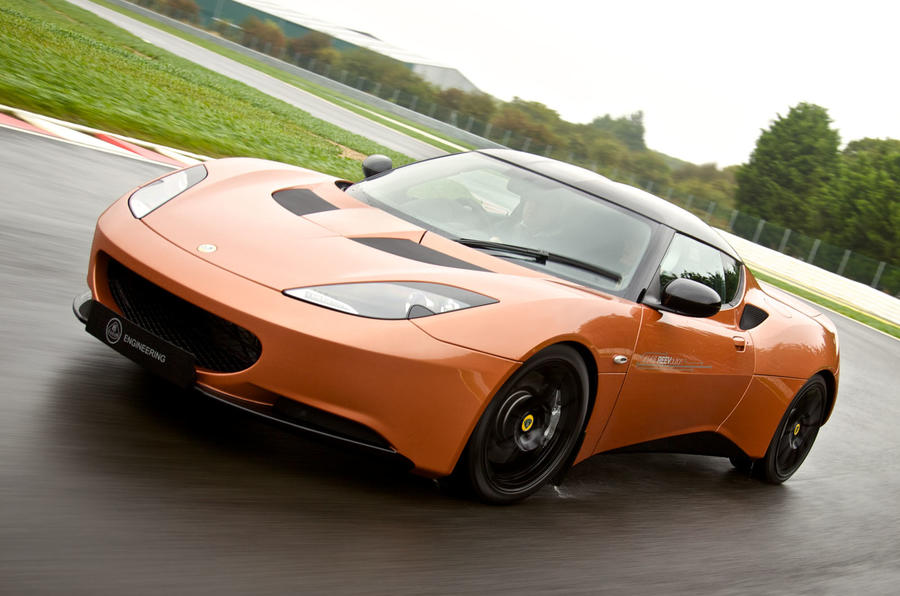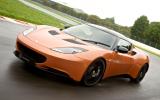What is it?
This is Lotus’s experimental 414E, an Evora-based serial hybrid which was also the basis for the recent Infiniti Emerg-E concept car. The 414E project has been funded by the UK taxpayer, via a share of the government’s Technology Strategy Board REEV project, which totalled £19m between all the parties involved.
The TSB supplies funding for projects that will help build the UK’s automotive supply base through the development of vital new technologies. With the full and partial electrification of the car very much part of the future, the TSB is particularly interested in building the UK’s expertise in electric vehicles.
Lotus had a number of partners for the development of the technology that makes up the 414E including Nissan (Infiniti’s parent company) Xtrac, Evo Electric and Jaguar Land Rover. JLR, however, shifted direction during the project and decided to abandon the range-extending ‘Limo Green’ project and build a conventional parallel hybrid - the recently shown XJ-e concept - instead.
Lotus says that the project also helped it bring small component manufacturers - such as those involved with battery manufacturing - up to speed on what is required to become a ‘Tier 1’ supplier, the type of company that supplies global car manufacturers directly.
Fitting a ‘range-extender’ electric drivetrain into the Evora was the project that was used as the basis for building this knowledge base. Lotus says the 414E spurred it on to help develop sophisticated Synchronous Axial flux Drive Motors with integral inverters, massively improved accuracy of the motor’s torque output (from errors of 25 per cent to just 2 per cent) and new cut-off safety systems for use in an accident.
Lotus has also used the project to develop sophisticated software control systems for hybrid drivetrains and even a virtual development programme that allows it to drive virtual test cars around a virtual Hethel test track.
There are two sources of power in the 414E. A new 15kWh battery pack which weighs 250kg and is fitted into the space normally occupied by the Evora’s rear seats. Lotus is claiming a range of 30 miles on a full charge and the ability for the battery to deliver a serious slug of power when the driver demands it.
The engine/generator is the latest version of Lotus’s bespoke 1.2-litre, three-cylinder, petrol unit. It is built around a single aluminium block, with the cylinder head, exhaust manifold integrated into one unit.
Good for 47bhp, when in charging mode it runs between 1500 and 3500rpm and can consume methanol, ethanol or petrol. The generator is mounted directly on the crankshaft. This engine is used to supply charge directly to the wheel motors either when the battery has dropped to a 30 per cent charge (at which point it stops driving the wheels) or when the driver is demanding full-bore acceleration. The motors drive the wheels through a single speed transmission.
Despite the 414E gaining 377kg over the 1382kg showroom Evora, the 4.4 second 0-62mph sprint and impressive (especially for a car driven by electric motors) top speed of 133mph is a function, say Lotus, of the new battery and motor design.






















Join the debate
Add your comment
'sophisticated Synchronous
'sophisticated Synchronous Axial flux Drive Motors with integral inverters' I'm wondering if you hit 88mph would it send you back to the future?
Step in the right direction
Surely this is an important development vehicle for the British car industry. No car with batteries is going to be light, even if it is a Lotus? I agree with TegTypeR’s comments about artificial internal noises etc. Range extenders are the only really viable solution for battery powered cars outside of city only use. But is this car not just an attempt to catch up with GM with their Ampera/ Volt which is already available?
Agree with Teg
I so agree with Teg's post. You are going to get all the advantages of extremely refined speed and so then you start trying to engineer those advantages out? What a nonsense...
EV's and hybrids are best when they play by their own rules rather than being forced to follow outdated convention.